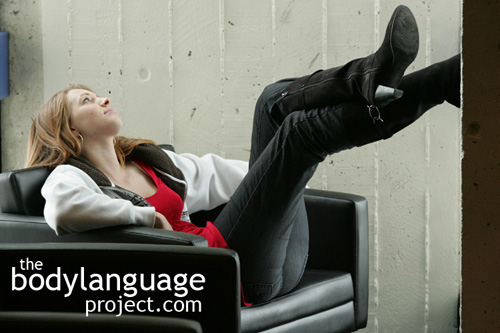Identifying relaxed body language helps us find people that belong, or that feel they belong, in a given situation. Those that are relaxed do so in environments they “own” and control and the higher is a persons’ status, the more diverse will be these environments, although situational novelty also plays a major role in comfort. Even low status people have a variety of locations in which they feel relaxed because being relaxed is a function of feeling that no threat is present and this is based largely on experience. Someone ridding a subway for the first time, for example, will be tensed and show rigid body postures like a coiled spring. They will be looking around at the subway signs and various indicators, and the people around them. It is impossible to be and look relaxed when the senses are on alert, when we’re keen to watch for signals of danger suspecting that all noises around us could indicate imminent danger. Someone that rides the subway daily won’t notice the signs and sounds around them, just like a highway driver zones out for the majority of the drive only to find out somehow he has arrived at his destination. Subway riders might even be so relaxed that they doze off on their route or become engrossed in a newspaper or magazine and miss their stop.
Relaxed body language is any body language that lacks muscle tension, the body is loose and the arms and legs move freely and naturally swaying with any motion. The torso may sag slightly to one side, or slump, but is not held by irregular tension. Thus, the body holds regular open body postures, with the arms and legs uncrossed. A leg might even be tucked under the body, to be sat on, showing that one is not prepared to leave and doesn’t expect to be caught off-guard. Breathing is steady and slow and can even become deep showing even more relaxation. Smiles happen in coordination with the eyes and the lips are not simply stretching across the face. The eyebrows are stable or move along with speech rather than frowning and the eyes gaze rather than stare and blink at a regular rate. The forehead will have no tension and we should watch for wrinkles which is an easy give-away to tension. Lines and wrinkles in the forehead quickly showing fear. Lastly, the skin colour is normal, not red showing embarrassment or anger, and isn’t pale with fear.

